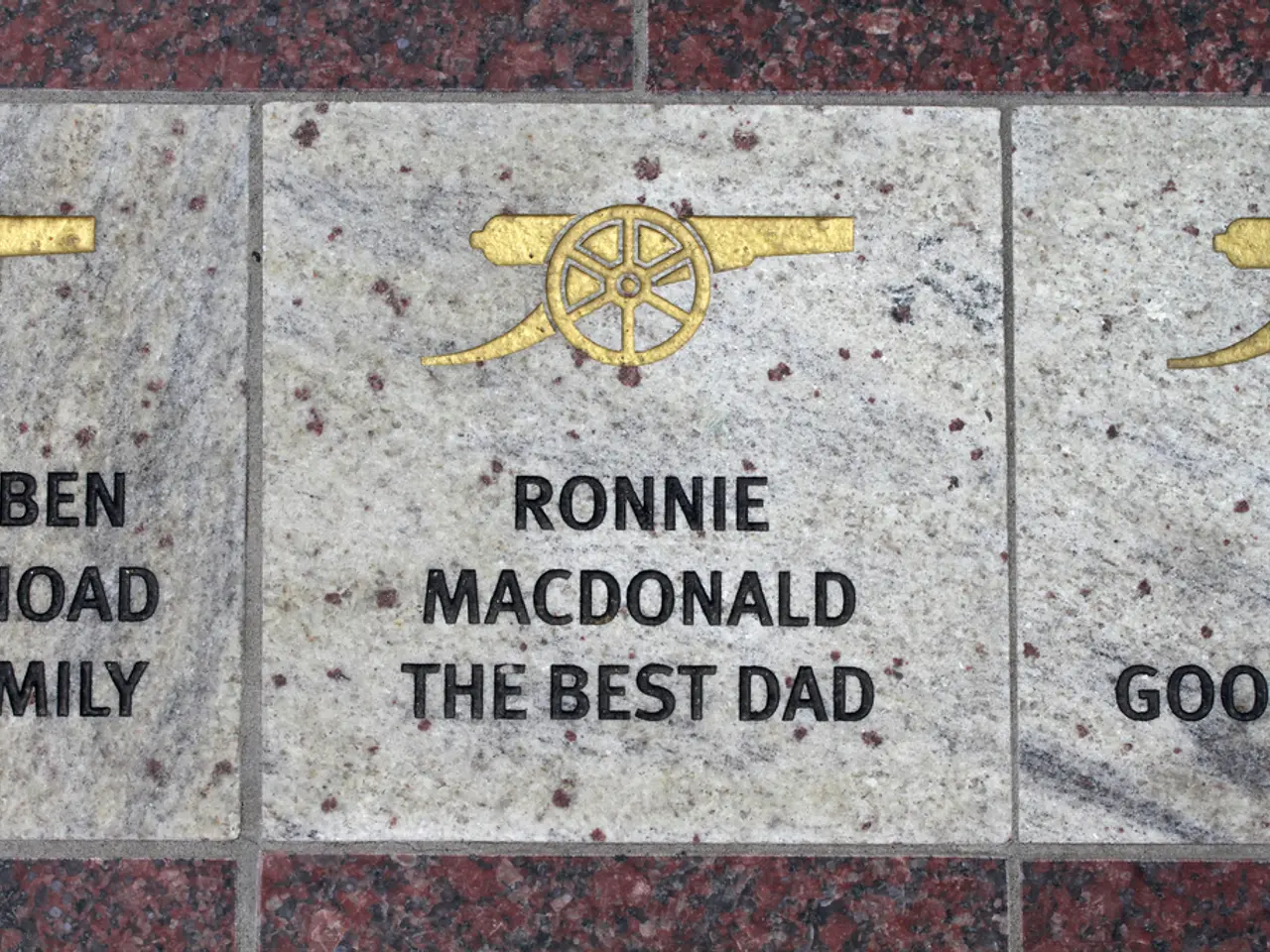A landmark with diverse functions: 150 years of Hermann's Monument in Lippe commemoration
The Hermann Monument, nestled in the picturesque Teutoburg Forest of Lippe, Germany, stands tall and proud, marking its 150th anniversary this year[1]. This iconic landmark, completed in 1875, commemorates Arminius (known as Hermann in German), the Cherusci tribal leader who led Germanic tribes to victory against the Romans in the Battle of the Teutoburg Forest (9 AD)[2].
The monument's origins date back to sketches by its builder Ernst von Bandel in 1819[1]. Construction began in 1838, with funding raised through popular subscriptions and patriotic enthusiasm, reflecting widespread national interest in German identity during the 19th century. The chosen site, Grotenburg near Detmold, was selected both for its visibility over Lippe and due to practical and aesthetic reasons[1].
The monument was unveiled with great ceremony in 1875, following more than three decades of construction, and shortly after the unification of Germany under Prussian leadership in 1871[2]. It thus also came to represent the newly unified German Empire. Over the years, Hermann has been an emblem of German cultural identity taught widely in schools well into the 20th century[2].
The monument’s significance has evolved:
- During the Nazi era, although Adolf Hitler reportedly disliked Hermann for outsmarting Roman military tactics, the monument was still appropriated as a symbol of German heroism and national heritage[2].
- It survived damage during World War II and continued to stand as a cultural landmark thereafter[2].
- In recent decades, the monument has been the focus of reflection on national identity, historical memory, and monument preservation, as showcased by the 150-year anniversary multimedia exhibition at the Lippisches Landesmuseum Detmold. This exhibition uses holograms and virtual reality to engage visitors with the layered meanings and contested histories of the site[3].
- Today, the Hermann Monument remains a major tourist attraction, recognised not just by local communities but also highlighted as a symbol of German unity and history broadly[4][5].
In May, the monument donned an oversized Arminia Bielefeld jersey, attracting even more visitors[6]. To celebrate its 150th birthday, an AI-generated Hermann will visit the local TV studio[7].
The Hermann Monument is a testament to the enduring spirit of German history and unity, transforming from a 19th-century nationalist symbol celebrating a Germanic victory to a complex cultural icon inviting public engagement with history, identity, and remembrance[1][2][3]. It stands as a beacon on a hill overlooking the Lippe region, a reminder of the past and a symbol of hope for the future.
[1] https://www.hermann-denkmal.de/ [2] https://www.britannica.com/topic/Hermann-Monument [3] https://www.detmold.de/kultur-und-freizeit/museum/lippisches-landesmuseum-detmold/ [4] https://www.visit-ostwestfalen-lippe.de/en/the-hermann-monument [5] https://www.germany.travel/en/destinations/north-rhine-westphalia/detmold/the-hermann-monument-in-detmold.html [6] https://www.arminia-bielefeld.de/news/hermann-denkmal-trug-arminia-jersey-an [7] https://www.wdr.de/nachrichten/lippe/hermann-denkmal-feiert-150-jahre-100.html
The Hermann Monument, adorned with an oversized Arminia Bielefeld jersey in May, showcases its significance in modern sports culture, extending beyond its historical roots. In celebration of its 150th birthday, an AI-generated Hermann will engage in a local TV interview, combining tradition with technology.






